Physical health
Pain can become so overwhelming and crippling that any task, as simple and routine as answering e-mails or going shopping, is perceived as climbing Mount Everest.
Pain and temporary or permanent functional limitations can certainly be seen as a frustration, but also as a catalyst, a vehicle for positive change.
We can help you transition to better physical health and support you through this process.
Our different services to improve your physical health
Are physical health services for you?
Our services are intended for:
- Individuals
- CNESST
- SAAQ
- Insurers
- Employer
- Employee and Family Assistance Program (EFAP)
And for people with:
- A musculoskeletal disorder (lumbago, neck pain, tendonitis, sprain, carpal tunnel compression, etc.)
- Chronic pain, fibromyalgia
- Peripheral neuropathic pain
- A neurological disorder (e.g. paralysis, degenerative disease, etc.)
- A mixed condition with mental health such as an adaptation disorder
The first step of a physical health intervention plan: assessing certain variables
Before developing a strategy, we need to evaluate a few specific points:
- Your physical/functional capacities,
- The environment in which activities are carried out with the required tools/instruments (at work, at home, at school)
- The practices and procedures.
Different approaches to improve your physical health
Since each physical health problem is unique, you want to rely on an experienced company and team that can offer you a personalized approach, tailored to your needs identified during the assessment.
At Aptitude Ergo, this is exactly what we offer.
Screening assessment for work retention
This approach consists of proactive screening for a physical health problem or risk factors present when performing work activities. The occupational therapist meets with the worker to assess their work situation and ensure their safety, comfort and efficiency.
This way, we can identify obstacles, constraints and risks. We can then offer you concrete and realistic solutions for recovery and job retention.
Intervention procedures:
- Assessment of targeted activity, including work organization
- Assessment of the physical limitations/equipment/work tools
- Revising principles of postural hygiene, operating method adaptation and energy saving technique
- Observations of worker procedures
- Instruction and recommendations
- On-the-job follow-up for integration of recommendations as needed
First line treatment – functional recovery
Our occupational therapists use therapeutic activities and work simulations for muscle building and physical reactivation purposes. We also connect with the various professionals involved in the case to define objectives and accelerate recovery.
This is all done to ensure a safe and effective return to work while ensuring the worker’s well-being.
First line treatment procedures:
- Main activities – simulation of tasks and work requirements.
- Teaching pain management strategies and energy saving techniques
- Demonstration and integration of appropriate and safe postural hygiene techniques to prevent relapse.
- A job-site visit can be provided to determine the task requirements and organization and adapt them as needed, meet the employer and develop a gradual reintegration plan.
- A personalized, collaborative back-to-work plan can be recommended to maximize the success of returning to work.
Functional capacity assessment and development
In our clinic, the occupational therapist uses standardized tests, therapeutic activities and work simulations for evaluation purposes and to develop functional abilities. At a later stage, targeted muscle building exercises and activities will be put in place to increase the person’s general or specific functioning.
The functional capacity development program is recommended when the condition changes slowly, physical abilities are limited in relation to work demands and/or pain is persistent.
This treatment ensures that workers have a safe and effective return to work while ensuring their well-being.
This program also gives you access to:
- A complete and objective assessment of the person’s functional abilities in order to make rehabilitation strategy recommendations.
- An opinion on the person’s ability to assume pre-injury employment.
- An opinion on respecting functional limitations issued by medical authorities.
Program procedures:
- Multidisciplinary assessment of functional capacities/disabilities and their contributing mechanisms.
- Progressive reactivation and retraining (functional skills development program)
- Main activities – simulation of work tasks where appropriate
- Postural hygiene/energy saving instruction
- Integration of different pain management strategies in the living environment
- If necessary, adjustment to the environment may be recommended
- A workplace visit may be provided to temporarily adapt the work, recommend a therapeutic or progressive back-to-work plan and follow-up.
Ability assessment and reactivation with a specific approach – persistent pain
This service is for people who live with persistent pain that goes beyond a normal recovery period (> 3 months) and causes functional disabilities despite the preservative therapeutic arsenal. This impact has overwhelmed family, social, professional and emotional spheres. In these cases, our occupational therapist works with the relevant members of the multidisciplinary/interdisciplinary team to promote recovery and achievement of the individual’s lifestyle habits.
Program objectives:
- Gradual recovery of lifestyle habits by improving functional abilities.
- Demystification of the condition and pain syndrome training – fears and beliefs.
- Recognition of symptoms and warning signs for better everyday life management.
- Familiarization with tools such as physical exercise, simple meditation technique, mindfulness.
Program procedures
- Multidisciplinary/interdisciplinary assessment of functional capacities/disabilities and mechanisms contributing to them.
- Cognitive-behavioral and rehabilitation (compensation) approach prioritized.
- Body mechanics, postural hygiene, energy saving training.
- Integration of different resilience, emotion management, stress, sleep strategies.
- Re-training with progressive effort.
- If necessary, environment adaptation may be recommended.
- Job site visit can be offered to adjust tasks, meet with employer and make a gradual reintegration plan. Hyperlinks to employment follow-up
Therapeutic return to work
After a period of functional ability rehabilitation, the worker is assisted to ensure a safe return to employment, ensure comfort and efficiency and avoid relapses.
Program objectives
- Recommend a concerted, realistic and achievable plan (worker, employer, insurer, physician)
- Identify developmental assets
- Identify the stress factors and risk factors that can cause or worsen the condition
- Untangle changeable obstacles, increase flexibility with follow-up during return
- Promote a successful return to work
Program procedures:
- Evaluation of the specific activity, including the schedule, work organization
- Evaluation of the physical layout/equipment/work tools
- Monitoring worker procedures
- Training and recommendations
- Employment follow-up for the integration of recommendations
Prevention and corporate training program
Personalized training is offered according to the needs and functional abilities of the worker or group of workers, while considering the facilities available to them. Offered in clinic or at the workplace. Simulations will be carried out.
Our instructors have advanced training and practical experience on the topics covered. We offer health-centric training in ergonomics, physical health, mental health and child development.
Our team is prepared to offer you:
- Office ergonomics training
- Training of office ergonomics instructors
- Varied instruction of postural hygiene technique, load handling, energy saving and injury prevention (factory, daycare, CPE, etc.)
- Instructor training related to normal sensorimotor development of children to better identify at-risk children and adapt school tasks
- Training on adaptation strategies in AVD, ADL for inflammatory arthropathies
- Training in mental health (PTSD, resilience, quality of life, stress management, priority management, facilitating the reintegration of workers with a mental health condition, etc.)
- Persistent pain training (evidence, impact of medication during rehabilitation, recommended approaches and tools for resuming a productive life)
- Disability management training
- OHS conference and day
These courses are offered in groups or individually
Program objectives:
- Develop safe and adapted strategies and procedures
- Promote energy saving by reducing effort and consequently fatigue and injuries among workers
- Promote a lasting and secure employment
- Prevent injuries or physical and mental health disabilities
- Prevent injured worker relapse and/or facilitate the reintegration of mental health workers
- Safe integration of new employees
- Enable worker adaptability
- Expertise sustainability and skill loss avoidance
Procedures:
- Work situation and needs analysis
- Sharing knowledge/strategies between experienced and novice workers
- Training adapted to the company
Personal and technical needs at home assessment
A person with functional disabilities faces barriers in their lifestyle at home and in their environment (grocery store, bank, etc.). Taking their environment into account, one of our occupational therapists performs an assessment at home to establish the level of help the individual requires to perform basic care and home maintenance.
Solutions, such as technical assistance or safe procedures, are proposed to optimize the performance of lifestyle habits. Solutions from training to the use of technical means are offered. A suitable physical reactivation program may be recommended and offered as needed.
Objectives:
- Favoriser l’autonomie au sein des activités de la vie quotidienne
- Le cas échéant, fournir de l’aide personnelle (ex. : remplir grille de la SAAQ et CNESST)
Procedures:
- Assessment of functional abilities through observation of the person in the activities of daily life
- Assessment of the home’s physical layout
- Compensatory approach – strategy and recommendation instruction
- Home monitoring for integration of recommendations and use of assistive devices as needed
Parking permit assessment for disabled persons
We meet the individual at the clinic to perform the assessment and analysis of their functional condition in order to complete the form required by the SAAQ.
Do you have questions about occupational therapy applied to physical health?
If you have any questions about our different services or approaches to improving your physical health, don’t hesitate to contact our dedicated team.
Always attentive to our customers, we can support you on the road to recovery.











